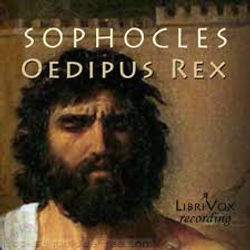
AP
Lit.
for Summer Reading
Scroll Down!

Want More?
Read a "Classic"
Ever wanted to read a "classic" but didn't know what, exactly, is deemed worthy as a "classic" by the literary community? Ever wondered what constitutes literary merit and why it's such a big deal? How to Read Literature Like a Professor assists us in answering these questions and more, but below are lists that you can peruse at your leisure. You might read one and maybe, just maybe...wait for it...enjoy it. If you want to know what we will be reading in the school year, scroll down! Look away if you couldn't care less, but plan on applying your dedication starting day 1 of Term A. Happy Summer!
Annotating Schmannotating
Actually, annotating is a serious topic and will be required during the course. How you annotate (i.e. symbols you use, arrows you draw, doodles you doodle, etc) is entirely up to you, of course; however, encouraging (er, requiring) your critical thinking skills while you are reading be visible is, well, entirely up to me. You may want to begin practicing this summer. Oh, and if you don't like to read, this course is not for you. We'll be reading. A LOT.
by Mortimer Adler
how to mark a book.
Click below to read Adler's article (yes, we'll be reading this the first day, too)
Adler
"Not to engage in the pursuit of ideas is to live like ants instead of men."
why Annotate
After reading Adler’s article, you should begin the process of finding the best method of marking that fits your learning style. Formally, we call this “annotation,” and it is not only recommended, it is required. That being said, marking a book (or anything we read) is certainly an activity that is personal and unique to you as an individual. It is important that you create a system that works well for you.
these are the texts we'll be reading this year: [click on the images for links that take you to plot summaries on amazon]
 |  |  |  |  |  |
|---|
 engage in careful reading and analysis of literature |  explore fiction and nonfiction that may contain sophisticated concepts, themes, and language |  deepen understanding of the ways writers use language to provide both meaning and pleasure |
|---|---|---|
 consider a work’s structure, style, and themes |  consider a work's use of figurative language, imagery, symbolism, and tone |  AP English Lit is recommended for students with a strong interest in reading, discussion, and analysis of literature. |
Dual Enrollment : Pros and Cons
There are a number of benefits to dual-enrollment programs. Earning college credit while still in high school sounds like a dream for many students. In addition, these programs introduce students to the rigors of college coursework early, and recent studies have shown that students who participate in dual-enrollment programs are more likely go on to get a college degree.
Why Consider a Dual-Enrollment Program?
-
Dual enrollment gives students an idea of what full-time college coursework will be like, (source: ecampustours.com). By trying out a few classes while still in high school, students can get used to the academic environment before leaving the comfort and support of home.
-
College courses can give a closer look at an area of academic interest.
-
According to collegeboard.com, most students change their majors at least once. Taking a college class as a high school senior can help find an area of interest before the pressure is on to declare a major.
-
If a student didn't qualify to take AP courses, or if those courses weren't available, taking a college-level class will demonstrate the ability to handle more difficult coursework. This ability is something every college admissions officer wants to see.
-
Due to the large number of online and virtual classes offered by many schools, dual-enrollment courses may be conducted right at high school.
-
Perhaps the biggest benefit of dual enrollment is to start accumulating college credits, helping to graduate on time or even early.
Dual Enrollment Sounds Great! Is There Any Reason Not to Participate?
-
If a course is already available at school, it might be best to take it there. Colleges may wonder why a student has chosen to take an intro class at a community college if there's an AP class in the same subject available at the high school level. (High school AP classes may well prove more challenging than an intro-level college course.) If the college course won't give something above and beyond what's available at high school, take a pass.
-
If a college class will interfere with regular coursework or extracurriculars, it may not be a good idea. A college course should enhance a student's resume, but not at the expense of other resume-enhancing activities.
-
A college course in music appreciation is a great resume booster-as long as your child plans to go into music. If he or she is planning a career in chemistry, the music class won't help, and could raise questions about the academic rigor of senior year courses. Carefully consider the academic value of any class.
-
Dual-enrollment courses are real college courses for real college credit; the grades will go on your student's permanent record. Before enrolling, make sure the student is ready for the demanding work a college class will require, or it could hurt his or her chances at college acceptance down the line. Furthermore, if a student fails a dual-enrollment course, it could mean he or she won't graduate high school on time.
-
If considering a dual-enrollment program for the purpose of earning college credits, be sure of the value of the credits. For each college, check to see how many credits (if any) a dual-enrollment class would earn. The credit policy will depend on the school (e.g. community colleges and state colleges vs. universities).



